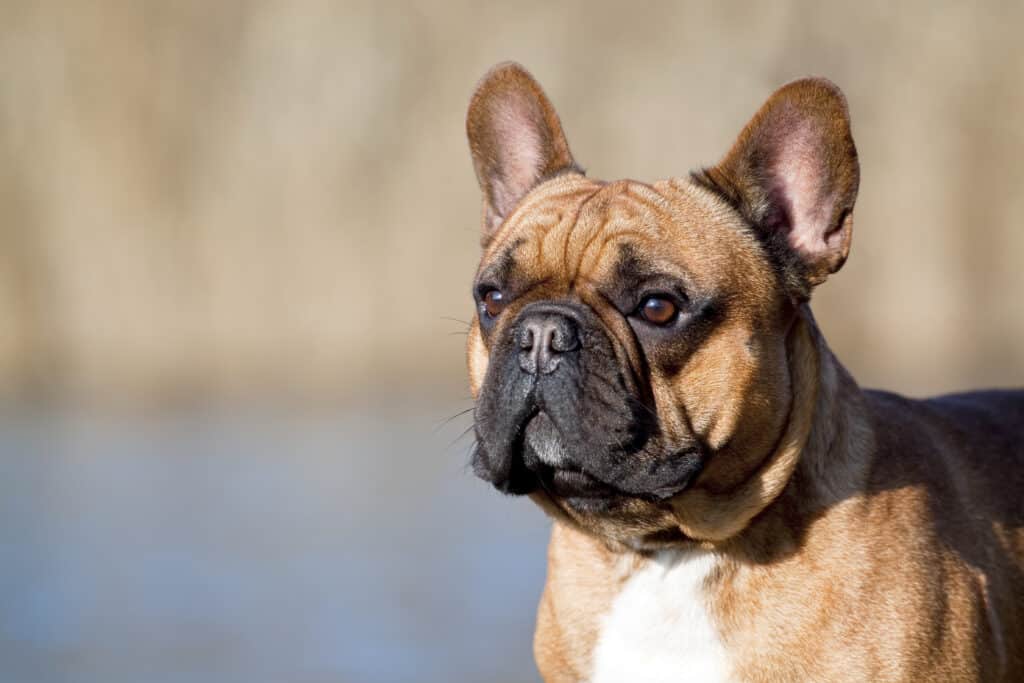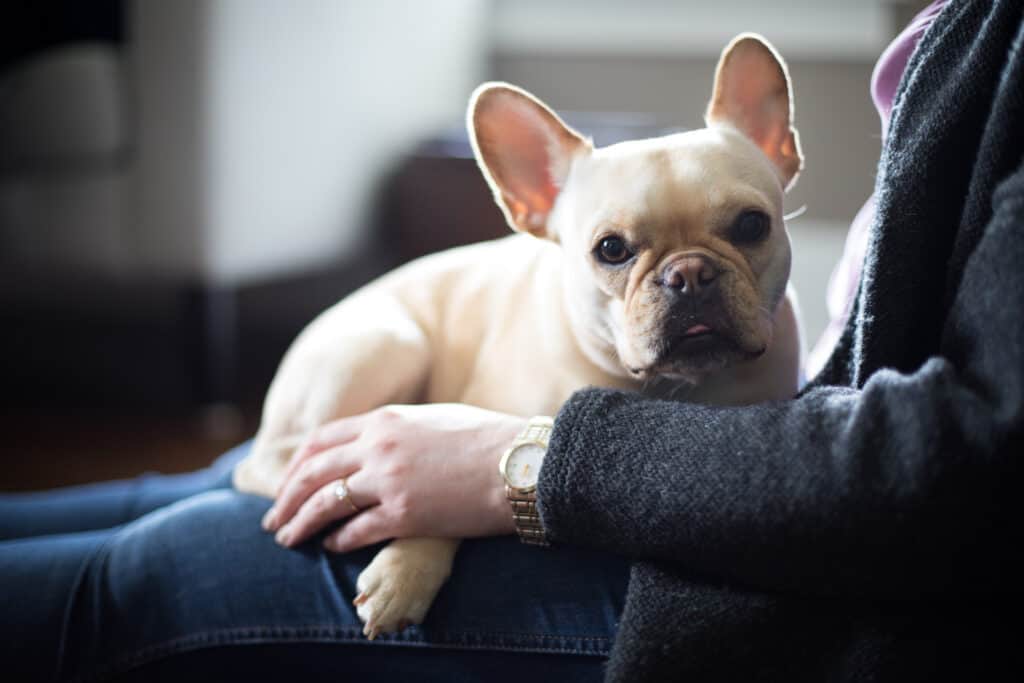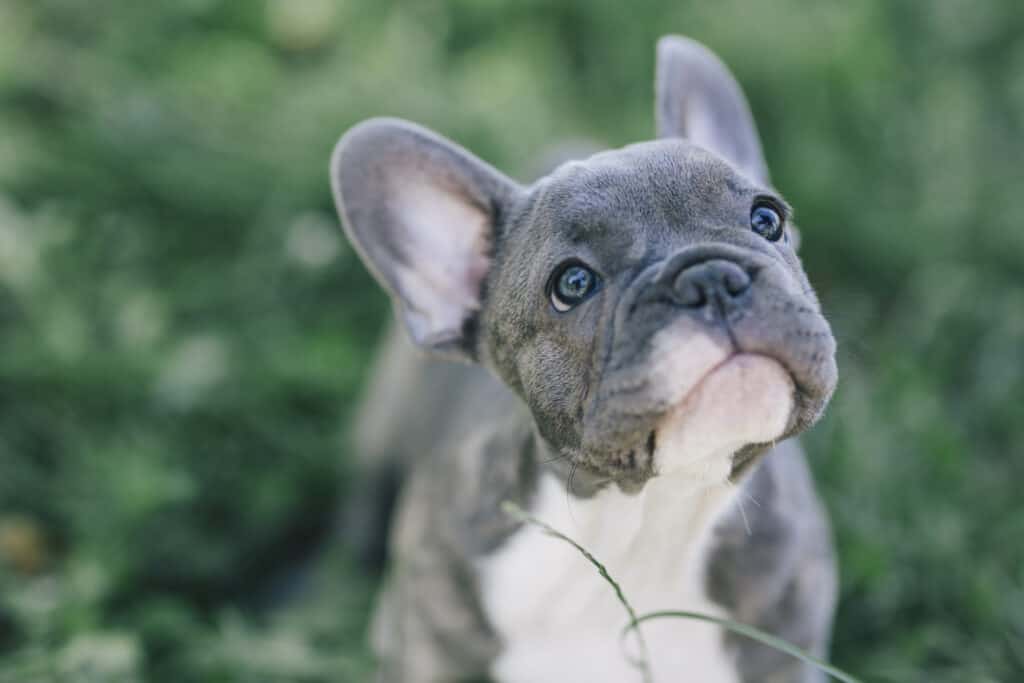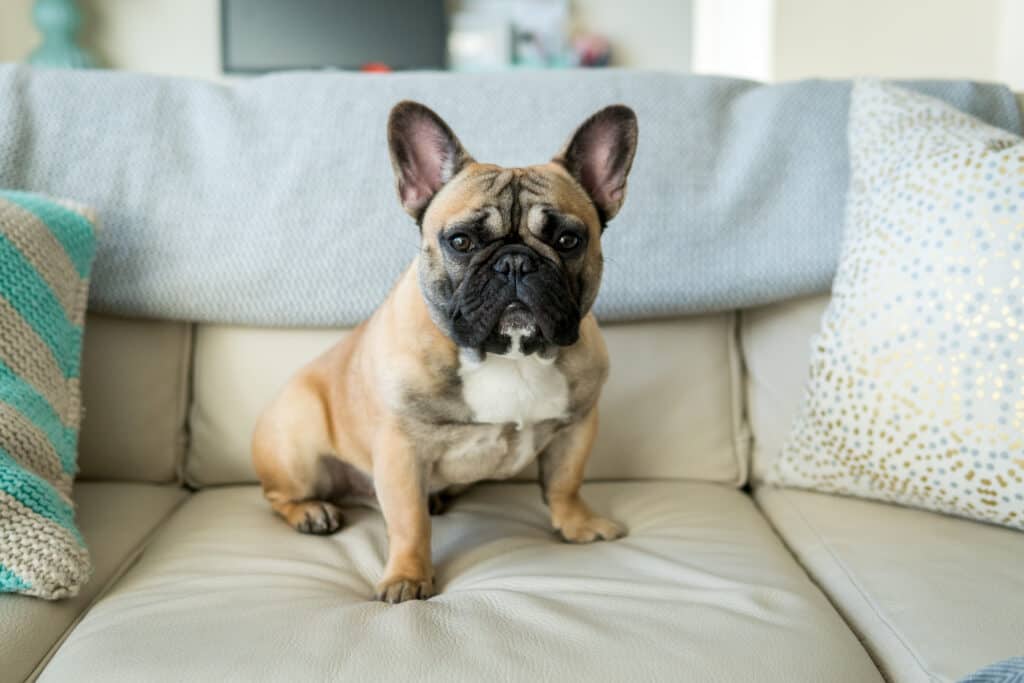- Once there, they won over the French with their squishy faces and were a fixture at 19th century brothels.
- They soon made the move to America where they became a hit prompting the founding of the first French Bulldog Club.
It is easy to forget that the French Bulldog is, first and foremost, a bulldog. Yes, that same big, fierce, muscular bulldog who used to bait bulls. The cute little Frenchie has evolved a lot over time that it’s hard to determine where they came from and how they originally looked.
Although the word French is linked to these dogs, they are not initially from France. The breed originated in England in the late 18th century. The English bulldogs were paired with smaller dogs to create a companion and domesticated version of the more aggressive bulldog. English workers used the Frenchie as a lapdog before they migrated to France in search of better opportunities.
During the Industrial Revolution, the lace workers’ shops closed, and they had to move to France. Their little lapdogs came with them. The French grew fond of this little version of the bulldog, so they started to breed them aggressively. This was when the French Bulldogs developed the physical attributes now popular in them.
| Height | 11 to 12 inches |
| Weight | 15 to 30 pounds |
| Lifespan | 11 to 14 years |
| Color | Black, tan, cream |
| Drooling | Medium |
| Hypoallergenic | No |
| Classification | Toy dog |
| Origins | England |
| Good with | Seniors, children, families, cats |
| Intelligence | Medium |
| Temperament | Gentle, outgoing, friendly, playful |
| Exercise needs | Low |
| Shedding amount | Low |
| Energy level | Calm |
| Drool amount | High |
| Barking | Only when necessary |
| Breed group | Non-sporting |
| Grooming | Easy |
Description and Size
The French Bulldog can be your new favorite companion dog. They fit nicely inside a small apartment since they don’t require much exercise. They are small, averaging 11 to 12 inches tall, but a bit heavy at 15 to 30 pounds. The Frenchie is undeniably charming, though they lack the muscles of the traditional bulldog.
They have small, compact, and muscular bodies and wrinkled faces. Their ears are bat-like and stand upright, while their skulls are half-flat and half-domed. They often come in the colors cream, white, and fawn. Some of them may have brindle patterns or black masks. Their eyes are colored dark brown, which contributes to the squished-up look on their faces.

French bulldogs are small and compact, with bat-like ears.
©Sbolotova/Shutterstock.com
History and Past Roles
Not many know that French Bulldogs were once found in the brothels of 19th century France. Specifically, they were in the bustling nightlife district of Montmartre. There, the Frenchies were used as “icebreakers” for brothel clients. The working girls brought the Frenchies in their arms as they talked with clients. These dogs were great conversation starters for Montmartre’s awkward clientele.
In fact, you can find photos of the French Bulldogs in the late 19th century and early 20th-century risqué postcards. A popular Frenchie named Bouboule was the subject of a painting by Henri de Toulouse-Lautrec. Poet Paul Leclerq also mentioned him in the description of Madame Palmyre, owner of the famous café La Souris.
The Frenchies were popular across social statuses. Lace workers were enamored of them, as well as the madams and working girls in France. No one knows for sure why lace workers wanted these dogs on their laps. Some said this was because Frenchies were so small that they fit inside their workplaces, and they’re the only breeds the ladies can afford to raise.

French bulldogs made for popular lapdogs in 19th Century France.
©VDB Photos/Shutterstock.com
Name
But before the Frenchie reached France and Montmartre, for that matter, they were first in the British Isles. The word “bull” was attached to their names because they were used in the sports of bull-baiting and dog fighting. But when bull-baiting became illegal after the Cruelty to Animals Act of 1835, the Bulldog was considered useless.
Fortunately, dog lovers took the Bulldogs in and domesticated them. Over time, the aggressiveness found in Bulldogs was tamed, and they were bred for families. These are the same characteristics found in the French Bulldog today as they are the offspring of the tamed version of the once bull-baiting dog.
Frenchies in Modern Times
The French Bulldog’s popularity didn’t stop there. Americans eventually grew interested in the dog breed since they were found in the homes of powerbrokers and the royals during that time. They brought them to the United States, and some said a Frenchie named Gamin de Pycombe even went down with the Titanic.
When they finally reached the Americas, they took no time in capturing their hearts. The Americans were the first to create a French Bulldog club. Then, they standardized the dog’s bat-like ears. It is no surprise that this breed has become America’s fourth most popular, the AKC said.

French bulldogs are the fourth-most-popular breed in America.
©Angyalosi Beata/Shutterstock.com
Personality
French Bulldogs are popular urban dogs. This means they can stay in small apartments all day since they don’t require exercise. They are well-mannered, so they also get along well with other household pets, such as other dog breeds and cats. Frenchies are a favorite of older people since they are low-maintenance, but they are also great pets for families with young children.
Though they are described as chill and calm, Frenchies also love to play and can be rambunctious at times. This is why owners need to consider having them professionally trained. Their mischievous side might be a problem for some who do not have the energy and time to clean up after the dogs’ mess.
The perfect owner for the Frenchie is patient and has a happy disposition. Frenchies love to play, so you need to spend some time with them cuddling on the couch. They need lots of attention from their owners to feel loved.

French bulldogs are popular because they are comfortable inside apartments and well-mannered with other dogs.
©Lined Photo/Shutterstock.com
Caring for a Frenchie
French Bulldogs are the perfect companion for seniors because they are low-maintenance. You may find them constantly snoozing at your feet since they are not really outdoor dogs. Frenchies are not the kinds of dogs you take to the beach during summer because they are easily exhausted on a sunny day. They suffer from heat stroke, so be careful about bringing them out.
Unlike other dog breeds, French Bulldogs are not great swimmers. The American Kennel Club (AKC) said this is because of the structure of their bodies. Frenchies have heavy bodies and short legs. Owners shouldn’t leave their Frenchies near the beach or pool because they are prone to drowning.
An excellent physical exercise for the Frenchie would be a 15-minute walk in the garden or playtime on cool evenings. Most importantly, keep them physically active inside your home by having them go up and down a flight of stairs. A good thing about French Bulldogs is their ability to stay healthy without exercise.
Owners only need to brush the Frenchie’s coat once a week. They need washing only once a month. But when you wash them, focus on scrubbing and checking their wrinkles. These should not get infected, and there should be no lesions or scabs on the dog’s skin. Doing this once to twice a month will keep your dog happy, healthy, and handsome.
French Bulldogs and Obesity
French Bulldogs are prone to obesity. As a result you will need to closely monitor the portions they are fed. Especially since they have quite an appetite and are capable of putting away quite a bit if left to their own devices.You will also need to provide treats in moderation.
You will need to seek the advice of your vet before choosing the best foods for your pet. Doing so will ensure you are able to provide them with the best age appropriate fare which is balanced, and healthy.
In order to prevent them from piling on the pounds, it is best to avoid feeding them human food, especially high fat offerings such as buttery toast, bacon, or cheesy omelettes.
Training and Socializing
Although French Bulldogs are great at socializing, they can also be quite possessive of their humans. Socializing should begin when they are puppies. You cannot expect an adult Frenchie who isn’t used to people to suddenly become sociable in adulthood. It is the same way with their relationships with other dogs and cats.
Owners usually have their Frenchies professionally trained because they are not easily potty-trained. These dogs are stubborn and may pee or poo where they need or want to without considering the consequences. It may take a while for them to follow commands, so carry patience and treats with you at all times.
However, the good thing about Frenchies is that they love positive comments and praises. If they do good in their training, make sure to heap praises on them. They love the positive reinforcement that they are doing great in their activities.
Bonus: Why Some Countries are Banning the Breeding of French Bulldogs

Flat-faced breeds like the French bulldog face health issues associated with that trait.
©Alexandra Kruspe/Shutterstock.com
The big round eyes and smushed faces of dog breeds like French bulldogs, Pugs, and Shih Tzus are certainly adorable – but the health issues related to these traits have led some countries to ban the breeding of these dogs.
Dogs of the flat-faced type are called brachycephalic – a syndrome producing tiny nostrils and a long, soft palate that hangs back and obstructs airways. These handicaps can make breathing so difficult that they are prone to heat stroke, heart problems, and other health issues. These breeds are also challenged with eye abnormalities, skin infections, spinal malformations, dental problems as well as difficulty exercising, sleeping and eating.
Concerns about brachycephalic breeds have led the country of Norway to ban the breeding of these dogs – calling it a violation of the Norwegian Animal Welfare Act. Bans or calls for more selectivity are being considered in the U.K., Canada, and Australia. It is hoped that these bans will result in ways to make the breeds healthier and happier.
Similar Animals to the French Bulldog
- Bulldog: Also known as English Bulldog or British Bulldog, this medium-sized and muscular breed is friendly and courageous. Like the Frenchie, it also has a distinctive wrinkly face.
- Pug: There are a lot of similarities between the Pug and the French Bulldog. Both of them have wrinkles, short muzzles, and curled tails. Pugs originated from China and are a close relative of the Pekingese and Lo-sze.
- American Bully: Although they have a few aggressive tendencies, these can be trained out of them. American Bullies are said to be loving and loyal, making them a great family pet. Some are put off by their seemingly great strength, but they can be gentle giants.
- American Pit Bull Terrier: APBTs have a reputation for aggression, but they can be trained to be loving, caring, and gentle. Make sure that playtime with kids doesn’t get too rough, so no one gets hurt. The APBT has been mixed with the Frenchie. The result is called the American French Bull Terrier.
FAQs
What is the size of an original French Bulldog?
The Frenchie should be between 11 and 12 inches and 15 and 30 pounds. They are medium-sized with a slightly heavy build because of their front bodies.
What is the connection between the Frenchies and the French brothels?
During the 19th century, working girls carried Frenchies in their arms while waiting for their clients. The dogs were used as “icebreakers” so shy clients could strike up a conversation with the girls.
What were they originally bred for?
Originally, the French Bulldog was the lapdog of lace workers in the British Isles. They fled to France during the Industrial Revolution, taking the dogs with them.
How did the Frenchie become popular in America?
Americans grew to love the French Bulldog when they visited Europe and saw this breed in the homes of the working class and powerbrokers. They brought them to America, where the first French Bulldog Club was established.
The photo featured at the top of this post is © Mary Swift/Shutterstock.com
Ready to discover the top 10 cutest dog breeds in the entire world?
How about the fastest dogs, the largest dogs and those that are -- quite frankly -- just the kindest dogs on the planet? Each day, AZ Animals sends out lists just like this to our thousands of email subscribers. And the best part? It's FREE. Join today by entering your email below.
Thank you for reading! Have some feedback for us? Contact the AZ Animals editorial team.






